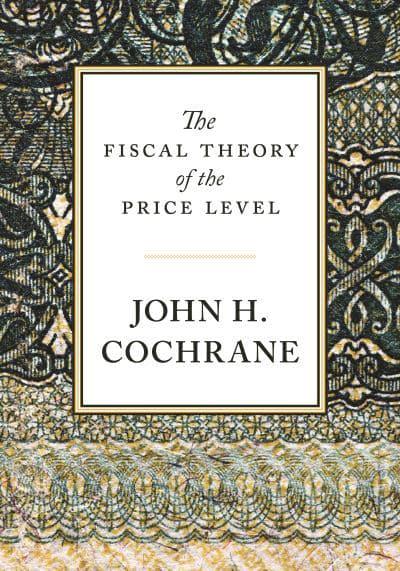The fiscal theory of the price level
- ISBN: 9780691242248
- Editorial: Princeton University Press
- Fecha de la edición: 2023
- Lugar de la edición: Princeton (NJ). Estados Unidos de Norteamérica
- Encuadernación: Cartoné
- Medidas: 24 cm
- Nº Pág.: 584
- Idiomas: Inglés

A comprehensive account of how government deficits and debt drive inflation
Where do inflation and deflation ultimately come from? The fiscal theory of the price level offers a simple answer: Prices adjust so that the real value of government debt equals the present value of taxes less spending. Inflation breaks out when people don't expect the government to fully repay its debts. The fiscal theory is well suited to today's economy: Financial innovation undermines money demand, and central banks don't control the money supply or aggressively change interest rates, invalidating classic theories, while large debts and deficits threaten inflation and constrain monetary policy. This book presents a comprehensive account of this important theory from one of its leading developers and advocates.
John Cochrane aims to make fiscal theory useful as a conceptual framework and modeling tool, and for analyzing history and policy. He merges fiscal theory with standard models in which central banks set interest rates, giving a novel account of monetary policy. He generalizes the theory to explain data and make realistic predictions. For example, inflation decreases in recessions despite deficits because discount rates fall, raising the value of debt; specifying that governments promise to partially repay debt avoids classic puzzles and allows the theory to apply at all times, not just during periods of high inflation. Cochrane offers an extensive rethinking of monetary doctrines and institutions through the eyes of fiscal theory, and analyzes the era of zero interest rates and post-pandemic inflation.
Filled with research by Cochrane and others, The Fiscal Theory of the Price Level offers important new insights about fiscal and monetary policy.
part i. the fiscal theory 1
Introduction 3
1 A Two-Period Model 5
1.1 The Last Day 5
1.2 Intuition of the One-Period Model 6
1.3 A Two-Period Model and Present Value 8
1.4 Monetary Policy, Fiscal Policy, and Inflation 9
1.5 Fiscal Policy Debt Sales 11
1.6 Debt Reactions and a Price Level Target 13
1.7 Fiscal Policy Changes Monetary Policy 15
1.8 Budget Constraints and Active versus Passive Policies 16
1.9 Active versus Passive with a Debt Rule 18
2 An Intertemporal Model 21
2.1 The Intertemporal Model 22
2.2 Dynamic Intuition 24
2.3 Equilibrium Formation 27
2.4 Fiscal and Monetary Policy 30
2.5 The Fiscal Theory of Monetary Policy 34
2.6 Interest Rate Rules 40
2.7 Fiscal Policy and Debt 42
2.8 The Central Bank and the Treasury 44
2.9 The Flat Supply Curve 47
2.10 Fiscal Stimulus 49
3 A Bit of Generality 52
3.1 Long-Term Debt 52
3.2 Ratios to GDP and a Focus on Inflation 54
3.3 Risk and Discounting 55
3.4 Money 57
3.5 Linearizations 62
3.6 Continuous Time 71
4 Debt, Deficits, Discount Rates, and Inflation 81
4.1 U.S. Surpluses and Debt 81
4.2 The Surplus Process—Stylized Facts 86
4.3 Surplus Process Estimates 98
4.4 The Roots of Inflation 102
5 Fiscal Theory in Sticky Price Models 116
5.1 The Simple New-Keynesian Model 117
5.2 Long-Term Debt 126
5.3 Neutrality, and Higher or Lower Inflation? 129
5.4 A Surplus Process 135
5.5 Responses and Rules 147
5.6 Alternative Surplus Processes 160
5.7 Continuous Time 162
5.8 Review and Preview 182
6 Fiscal Constraints 187
6.1 The Present Value Laffer Curve 187
6.2 Discount Rates 191
6.3 Crashes and Breakouts 193
6.4 What If r < g? 195
6.5 Assets and Liabilities 208
7 Long-Term Debt Dynamics 211
7.1 Forward Guidance and Bond Price Targets 212
7.2 Bond Quantities 214
7.3 Bond Sales and Bond Price Targets 219
7.4 A General Formula 223
7.5 Constraints on Policy 224
7.6 Quantitative Easing and Friends 227
7.7 A Look at the Maturity Structure 233
part ii. assets, rules, and institutions 235
8 Assets and Choices 237
8.1 Indexed Debt, Foreign Debt 238
8.2 Currency Pegs and Gold Standard 240
8.3 The Corporate Finance of Government Debt 244
8.4 Maturity, Pegs, Promises, and Runs 248
8.5 Default 252
8.6 Central Bank Independence 254
9 Better Rules 257
9.1 Inflation Targets 257
9.2 A Simple Model of an Inflation Target 260
9.3 Fiscal Rules 262
9.4 Targeting the Spread 268
9.5 A Price Level Target via Indexed Debt 277
9.6 A CPI Standard? 281
10 Balance Sheets and Pots of Assets 284
10.1 Three Pots of Assets 285
10.2 A Managed Central Bank Portfolio 294
10.3 Balance Sheets, Contingent Transfers, and the ECB 295
10.4 Assets 298
10.5 Backing 299
10.6 After Government Money 301
10.7 How Much Money Do We Need, Really? 306
part iii. monetary doctrines, institutions,
and some histories 309
11 Monetary Policies 311
11.1 The Composition versus the Level of Government Debt 311
11.2 Open Market Operations 312
11.3 An Elastic Currency 315
11.4 Balance Sheet Control 316
11.5 Real Bills 318
12 Interest Rate Targets 320
12.1 Interest Rate Pegs 320
12.2 Taylor Rules 322
13 Monetary Institutions 325
13.1 Inside Money 325
13.2 Financial Innovation 327
13.3 Interest-Paying Money and the Friedman Rule 330
13.4 Separating Debt from Money 332
13.5 A Frictionless Benchmark 334
14 Stories and Histories 336
14.1 Helicopters 336
14.2 Hyperinflations and Currency Crashes 338
14.3 Ends of Inflations 339
14.4 Episodes of War and Parity 348
15 Esthetics and Philosophy 351
part iv. money, interest rates, and regimes 355
16 The New-Keynesian Model 357
16.1 The Simplest Model 357
16.2 Inflation Targets and Equilibrium Selection 360
16.3 What’s Wrong with Hyperinflations? 362
16.4 Central Bank Destabilization? 363
16.5 Identification 364
16.6 Observational Equivalence 366
16.7 Responses 367
16.8 A Full Model and the Lower Bound 370
16.9 Identification Patches 374
16.10 Equilibrium Selection Patches 376
17 Keynesian Models with Sticky Prices 391
17.1 New versus Old Keynesian Models 391
17.2 Responses to Interest Rate Changes 392
17.3 Rational Expectations Responses with Policy Rules 395
17.4 Full Model Responses 401
17.5 Optimal Policy, Determinacy, and Selection 410
18 History and Implications 415
18.1 New and Old-Keynesian Confusion 415
18.2 Adaptive Expectations? 422
18.3 Interest Rate Targets: A Summary 425
19 Monetarism 427
19.1 Equilibria and Regimes 428
19.2 Interest Elastic Money Demand and Multiple Equilibria 429
19.3 Money in Utility 432
19.4 Pruning Equilibria 439
19.5 Cash in Advance Model 441
19.6 Unpleasant Arithmetic and Fiscal Theory 449
19.7 Seigniorage and Hyperinflation 451
19.8 Monetary History 452
20 The Zero Bound 458
20.1 The Experiment 458
20.2 Zero Bound Puzzles 463
20.3 Zero Bound Summary and Implications 476
21 The COVID-19 Inflation 478
22 Observational Equivalence 487
22.1 Equivalence and Regimes 487
22.2 Implications Overview 488
22.3 Regime Tests and Model-Based Estimates 492
22.4 Plausibility and Other Evidence 495
22.5 Laugh Tests 497
22.6 Chicken and Regimes 498
22.7 Inconsistent or Undetermined Regimes 499
22.8 Regimes and Practices 500
part v. past, present, and future 503
23 Past and Present 505
23.1 The Rise of Fiscal Theory 505
23.2 Precursors 506
23.3 Disputes 509
24 Tests, Models, and Applications 512
24.1 Tests 512
24.2 Fiscal Theory Models 512
24.3 Exchange Rates 520
24.4 Applications 521
25 The Future 523
25.1 Episodes 523
25.2 Theory and Models 525









